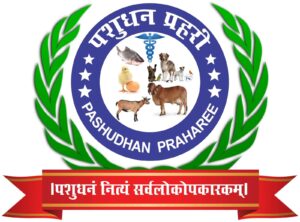The Role of Nanotechnology in Veterinary and Animal Sciences
Bhagyashree Kamble , S.K.Joshi , M.S.Thakur, Asit Jain, Vaishali khare, Akansha Singh and S.S.Tomar
Nanaji Deshmukh Veterinary Science University, Jabalpur (MP)
Introduction
Nanotechnology is a rapidly advancing field that has found significant applications in veterinary and animal sciences. The ability to manipulate materials at the nanometer scale has led to breakthroughs in disease diagnosis, drug delivery, animal nutrition, reproduction, and livestock management. This article explores the various ways in which nanotechnology is revolutionizing veterinary medicine and animal science.
Nanotechnology in Disease Diagnosis and Monitoring
One of the most promising applications of nanotechnology in veterinary medicine is the development of advanced diagnostic tools. Early and accurate diagnosis of animal diseases is crucial for effective treatment and control.
- Nanosensors and Nanobiosensors: These devices can detect pathogens, toxins, and disease biomarkers at extremely low concentrations. For instance, nanosensors can be used to identify viral and bacterial infections in livestock, ensuring timely intervention.
- Lab-on-a-chip Technology: This miniaturized diagnostic tool integrates multiple laboratory functions on a single chip, enabling rapid and on-site disease detection in animals.
Nanotechnology in Drug Delivery and Therapeutics
Nanotechnology has significantly improved drug delivery mechanisms in veterinary medicine, enhancing the effectiveness of treatments while minimizing side effects.
- Nanocarriers (liposomes, polymeric nanoparticles, dendrimers): These nanomaterials can encapsulate drugs, ensuring targeted delivery to specific tissues or cells. This targeted approach reduces drug wastage and enhances therapeutic efficiency.
- Controlled Release Formulations: Nanoparticles allow for sustained release of drugs over time, reducing the need for frequent dosing and improving patient compliance.
- Nanovaccines: These vaccines enhance immune responses, reduce antigen doses, and improve stability. Nanoparticle-based vaccines have shown great potential in preventing infectious diseases in animals.
Nanotechnology in Animal Nutrition and Feed Supplements
Ensuring proper nutrition is essential for animal health, growth, and productivity. Nanotechnology is playing a crucial role in improving feed efficiency and nutrient absorption.
- Nano-minerals and Nano-nutrients: Minerals such as zinc, selenium, and iron, when administered in nano-form, exhibit higher bioavailability, leading to improved animal health and performance.
- Nanoparticles for Feed Additives:These can enhance digestion, boost immunity, and promote better growth rates in livestock. For example, nano-encapsulated probiotics provide better gut health benefits compared to traditional probiotics.
Nanotechnology in Animal Reproduction and Breeding
Reproductive efficiency is critical in livestock management. Nanotechnology offers innovative solutions to improve reproductive success rates in animals.
- Nanoparticles in Artificial Insemination (AI): Nanotechnology enhances sperm preservation, improving motility and viability during storage and transportation.
- Nano-based Hormone Delivery Systems: These systems ensure controlled release of reproductive hormones, aiding in better fertility management.
Nanotechnology in Wound Healing and Infection Control
Veterinary medicine has greatly benefited from nanotechnology in the management of wounds and infections.
- Nano-antimicrobials (silver nanoparticles, chitosan nanoparticles): These have strong antibacterial properties and promote faster wound healing.
- Nanocoatings for Surgical Instruments and Bandages: Nanotechnology-based antimicrobial coatings help maintain sterility, reducing post-operative infections.
Nanotechnology in Livestock Management and Food Safety
Ensuring the safety and quality of animal products is crucial for public health. Nanotechnology has introduced innovative solutions for food safety and livestock management.
- Nano-bar coding and Nanosensors: These tools improve traceability of animal products from farm to consumer, enhancing food safety standards.
- Smart Packaging: Nanotechnology-based packaging materials can detect contamination and extend the shelf life of animal-derived products.
- Nano-pesticides and Nano-fertilizers: These provide efficient pest and disease control in animal farming while reducing environmental impact.
Challenges and Future Prospects
While nanotechnology offers immense benefits, several challenges must be addressed before its widespread adoption in veterinary and animal sciences.
- Regulatory Concerns: The safety and environmental impact of nanomaterials need thorough assessment before approval.
- Potential Toxicity: The long-term effects of nanoparticles on animal and human health require further research.
- Cost-Effectiveness: The high cost of nanotechnology-based solutions may limit their accessibility to small-scale farmers.
Despite these challenges, the future of nanotechnology in veterinary and animal sciences looks promising. Continued research and innovation will lead to safer, more efficient, and cost-effective applications, ultimately benefiting animal health, productivity, and food security.
Conclusion
Nanotechnology is revolutionizing veterinary and animal sciences, offering advanced solutions for disease diagnosis, treatment, nutrition, reproduction, and livestock management. While challenges remain, the potential benefits of nanotechnology far outweigh the risks, making it a crucial tool for the future of animal health and agricultural sustainability.



